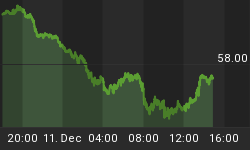As investors and market strategists sift through every new economic tea leaf for clues about the health of the U.S. economy, I am reminded of a group of railroad engineers discussing the structural qualities of the track bed while an overloaded fright train careens around a sharp turn. For those not lost in the inconsequential minutia, a severe recession is an outright certainty, regardless of what current statistics might indicate on a day-to-day basis.
Since the bursting of the dot.com bubble, the U.S. economy has been fueled by an enormous consumer spending spree. This largess has been artificially propped up by the largest real estate bubble in U.S. history. In fact, housing has acted as a three-legged stool upon which American consumers have been precariously perched. Those legs are: 1) home equity extractions; 2) adjustable rate mortgages; 3) the wealth effect.
First, rising real estate prices allowed Americans to routinely borrow against home equity and repeatedly refinance loans of any stripe (be they mortgage, credit card or automobile) at lower rates. If the home equity was turned into cash, or used to pay off other debts, the result was additional spending beyond what consumers could have afforded based solely on their incomes.
Second, adjustable rate mortgages, especially the "negative amortization" or the "interest only" varieties, allowed Americans to enjoy temporarily low mortgage payments despite accumulating bigger mortgages. The difference between those temporarily low rates and the normal rates, to which these loans would ultimately reset, was available to be spent by homeowners.
Third, as real estate prices rose, homeowners felt wealthier, which has been shown to be a stimulant to spending. In addition, the pervasive belief that home prices would continue to rise indefinitely led many Americans to make false assumptions regarding their financial circumstances and their need to save to meet future obligations and retirement goals. As a result, money that would have typically been applied to savings was spent.
These three factors combined to encourage consumer spending on an unprecedented scale relative to incomes, and allowed debt to rise to levels that would have been impossible had mortgage payments been fully amortized and real estate prices remained at historically reasonable levels. Of course, many economists confused this spending binge with legitimate economic growth, just as they confused rising home prices with increased savings. However, as with the dot.com bubble, the truth only becomes apparent to the inebriated when the punch bowl runs dry.
Now that ARMs are being reset to market rates, home prices are falling, and the wealth effect is working in reverse, consumers will be forced to atone for a prolonged period of conspicuous consumption by enduring an even longer one of frugality. Excess spending will be replaced by excess savings. On the mortgage front, higher payments on ARMs mean less money available for discretionary spending. On the cash-out side, lower real estate prices mean houses will no longer act like ATM machines. Finally, as homeowners have to adjust their financial expectations to the new reality, saving will have to become the new national pastime, as millions of homeowners desperately try to make up for lost time.
However, it is important to point out that as a collapse in consumer spending ushers in a recession, the Fed will not have the luxury of lowering interest rates to cushion the fall. Despite surging unemployment, "inflation" will only accelerate, as extreme dollar weakness abroad translates into higher consumer prices at home. In addition, long-term interest rates will be headed higher as well, as foreign savers look to be compensated for this loss of purchasing power. Higher interest rates and substantial increases in the cost of living will only exacerbate the housing downturn and the recession, turning what would normally have been simply a severe recession into something far worse.
Although this may sound like a sobering scenario, it is definitely not the worst case. The real doomsday would only come as a result of Fed-created hyper-inflation which could be used to pump up all varieties of falling asset prices. Let's hope the boys at the Fed decide not to go there.
For a more in depth analysis of the U.S. economy and why it is in so much trouble, read my new book "Crash Proof: How to Profit from the Coming Economic Collapse." Click here to order a copy today.
More importantly make sure to protect your wealth and preserve your purchasing power before it's too late. Protect your wealth and preserve your purchasing power before it's too late. Discover the best way to buy gold at www.goldyoucanfold.com, download my free research report on the powerful case for investing in foreign equities available at www.researchreportone.com, and subscribe to my free, on-line investment newsletter at http://www.europac.net/newsletter/newsletter.asp.
















